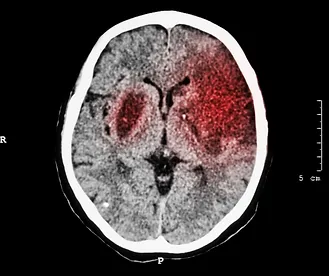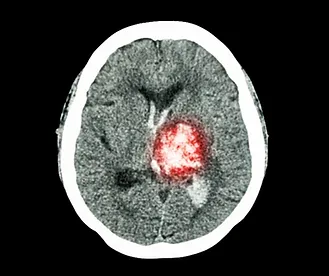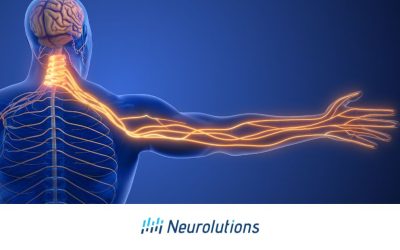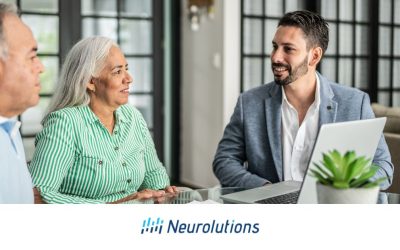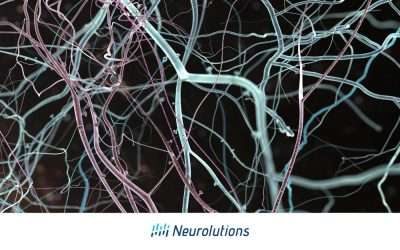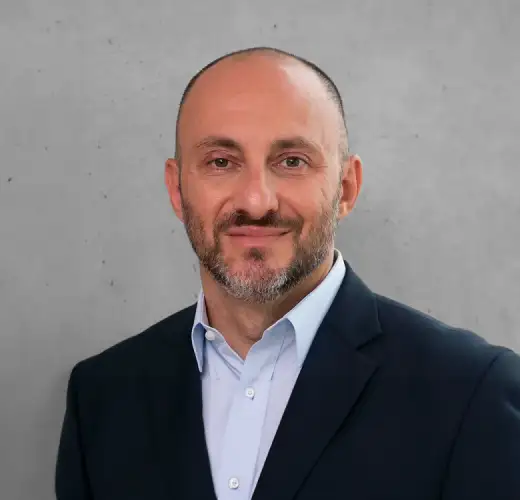What is a Stroke?
Strokes are also known as cerebrovascular accidents (CVA), these occur when blood flow in part of the brain is interrupted, denying brain tissue oxygen and nutrients. Damage to or death of brain cells can occur within minutes of such an event.
There is a wide range of effects on stroke survivors based on where the stroke occurred and how much damage occurred to brain tissue. Some survivors will completely recover, but almost 2/3 have some sort of disability.
Stroke Statistics
- Every year, nearly 800 thousand people in the United States have a stroke.
- Nearly 1 of 4 strokes are in people who have already had a stroke previously.
- About 87% of all strokes are ischemic strokes, during which blood flow to the brain is blocked.
- Stroke costs the US an estimated $34 billion annually. This total includes the value of healthcare services, medicines to treat stroke, and missed days of labor.
- Over half of stroke survivors age 65 and older have impaired mobility due to stroke.
- Stroke is the fifth leading cause of death in the United States, but the risk of having a stroke varies by race.
- Despite the increased risk of stroke with aging, it can happen at any age.
- Most strokes are due to high blood pressure, high cholesterol, smoking, obesity, or diabetes. More than a third of Americans suffer from at least one of these conditions or habits.
What Causes a Stroke?
Several risk factors contribute to the cause of stroke in patients. These risk factors for stroke include:
- High Blood Pressure: A stroke risk factor is high blood pressure. High blood pressure is considered to be 140/90 millimeters of mercury (mmHg) or higher over time. If you have diabetes or chronic kidney disease, your blood pressure will be 130/80 mmHg or higher.
- Diabetes: Blood sugar levels rise in people with diabetes because of insufficient insulin production or improper insulin use. Insulin helps transport sugar from the bloodstream into cells for use as energy.
- Heart Disease: A stroke can be caused by ischemic heart disease, cardiomyopathy, heart failure, and atrial fibrillation.
- Smoking: By smoking, blood vessels can be damaged, resulting in high blood pressure. Smoking can also lower oxygen levels in your body’s tissues. Secondhand smoke exposure can also cause damage to blood vessels.
- Age and Gender: The risk of stroke increases with age. Men are more likely to have a stroke when they are younger, but women are more likely to die from a stroke. People who take birth control pills may also be at a higher risk of stroke.
- Race and Ethnicity: Strokes are more common in African Americans, Alaska Natives, and American Indians than in White, Latinx, or Asian Americans.
- Family History: You are at a greater risk of having a stroke if you have a family history of strokes.
- Personal History: An individual who has had a stroke is at higher risk for another one. The risk of having a repeat stroke is the highest right after a stroke. A TIA (transient ischemic attack) also increases the risk of having another stroke.
Are There Different Types of Strokes?
There are three types of stroke that you can be diagnosed with, Ischemic Stroke, Hemorrhagic Stroke, and Transient Ischemic Attack (TIA).
What are the Three Types of Stroke?
Ischemic Stroke:
The image is a CT scan of a Brain after an Ischemic Stroke
Approximately 87% of strokes are ischemic strokes. An ischemic stroke occurs when an artery becomes blocked, preventing oxygen-filled blood from flowing to the brain. Blood clots are usually the cause of an ischemic stroke.
Hemorrhagic Stroke:
The image is a CT scan of a Brain after an Hemorrhagic Stroke
In a hemorrhagic stroke, blood leaks into the brain from a ruptured artery or as a result of a leaky blood vessel. Blood causes swelling in the brain and increased pressure. This increases damage to the brain. There are 2 types of hemorrhagic strokes:
- Intracerebral Hemorrhage – The most common type of hemorrhagic stroke is intracerebral hemorrhage when an artery ruptures within the brain (old age and high blood pressure are the main causes).
- Subarachnoid Hemorrhage – Usually caused by aneurysms and head injuries, subarachnoid hemorrhage occurs when there is bleeding in the subarachnoid space between the brain and the brain tissue.
TIA (transient ischemic attack):
- TIAs are often referred to as mini-strokes since the blood supply to the brain is blocked for a short time. TIAs usually do not cause permanent damage but they can be a warning sign of future strokes.
What are the Symptoms of a Stroke?
Identifying the signs and symptoms of stroke can help an individual take immediate action and save a life – hopefully even his or her own.
So what does it feel like to have a stroke?
- Suddenly becoming weak or numb on one side of the body, particularly the face, arm, or leg.
- The sudden feeling of being confused and unable to speak or understand other people speaking.
- Distortion of vision, or complete loss of eyesight in one or both eyes.
- Sudden trouble walking, experiencing dizziness, losing your balance, or being uncoordinated.
- A severe headache that comes suddenly and out of nowhere.
A stroke is a medical emergency! The brain damage caused by a stroke can be lessened with fast and early treatment. The stroke FAST method is the best way to determine if someone is having a stroke.
- Face – Does their face look uneven?
- Arm – Is one arm drifting down?
- Speech – Is their speech slurred or strange-sounding?
- Time – If you notice ANY of these signs, waste no time and call emergency services.
What Happens After You Have a Stroke?
The timeline after a stroke defines your recovery. Despite being a disease of the brain, stroke can affect the entire body. Hemiplegia, or paralysis of a singular side of the body, is a common type of disability that can result from stroke.
Hemiparesis or one-sided weakness is a similar but less debilitating disability. Hemiparesis is something that survivors can work to rehabilitate from and start to restore strength and use of extremities by utilizing therapies.
Thinking, awareness, attention, learning, judgment, and memory can be affected by stroke. Visual changes can also be experienced by individuals such as difficulty attending to one side (usually the left called neglect), field loss in one or more quadrants, or changes in perception. In short, strokes can impair your vision and visual perception of what is around you.
Stroke survivors can also have struggles understanding or forming speech as well as having emotional difficulties. Stroke survivors may find it difficult to control their emotions and find it challenging to know when to express themselves appropriately. Depression is a common diagnosis among stroke survivors.
Stroke survivors may also experience numbness or changes in sensation. Pain is often worse in the hands and feet and is aggravated by temperature changes.
Other less outwardly noticeable symptoms affect many stroke survivors. They include difficulty sleeping, fatigue with reduced energy levels, and decreased interest in initiating activities they enjoyed before the stroke.
Can you Recover from Stroke Paralysis?
The good news is that stroke recovery is possible. With the right treatment and rehabilitation, you can regain your strength, mobility, and independence.
The most important thing to do after a stroke is to identify what symptoms you are experiencing. A doctor will give you a diagnosis and recommend a treatment plan. The goal of stroke rehabilitation treatment is to help you recover as much function as possible.
Find a comprehensive occupational, physical, and speech therapy team that specializes in stroke rehabilitation and stays current with technology and best stroke practice guidelines to help you on your road to recovery.
How Can You Prevent A Stroke From Happening?
Strokes are the fifth leading cause of death in the US. But there are some things you can do to lower your risk of having a stroke:
- Know your risk factors: Being overweight, smoking, not exercising, and eating a high-salt diet all increase your risk of having a stroke.
- Know your symptoms: Sudden numbness to the face or arm; sudden confusion or trouble speaking; sudden severe headache with no known cause; sudden vision changes with no known cause; long-term pain in the neck, back, head, or jaw.
- Get checked out immediately if you have any symptoms for more than five minutes.
Need more help and direction? Contact our clinical team at Neurolutions. We are skilled experts in stroke rehabilitation and are happy to help steer you in the right direction. Email: info@neurolutions.com
References
Stroke Recovery Clinician Handbook
Spasticity after Stroke- Stroke-Rehab.Com
National Institute on Deafness and Other Communication Disorders
Know Stroke- Post-Stroke Rehabilitation
Canadian Stroke Best Practices
Evidence-Based Review of Stroke Rehabilitation
Guidelines for Adult Stroke Recovery- APTA
Guidelines for Adult Stroke Recovery and Rehabilitation- AHA


